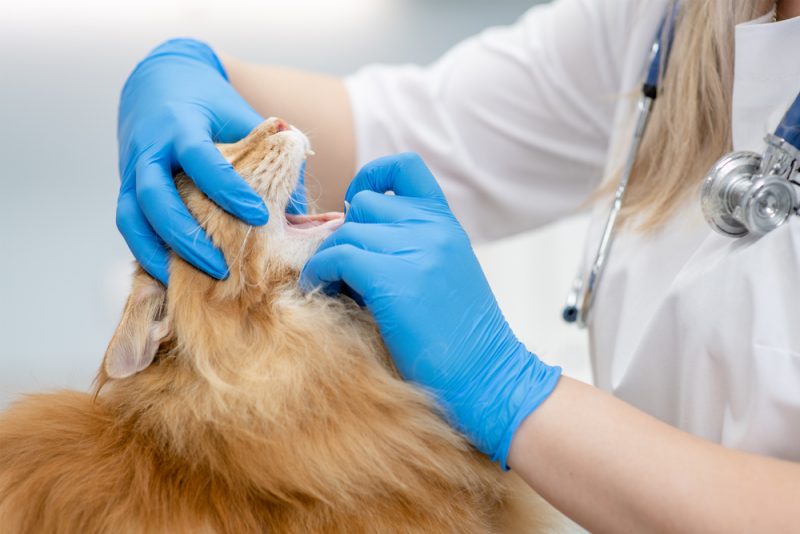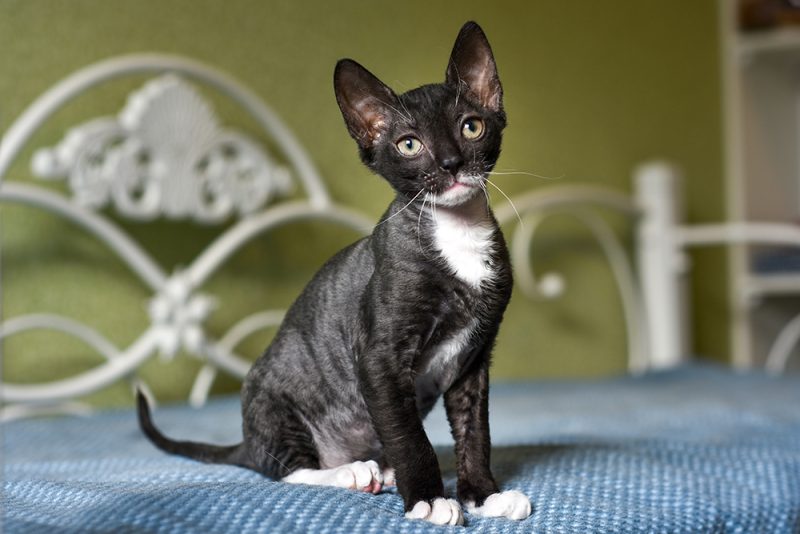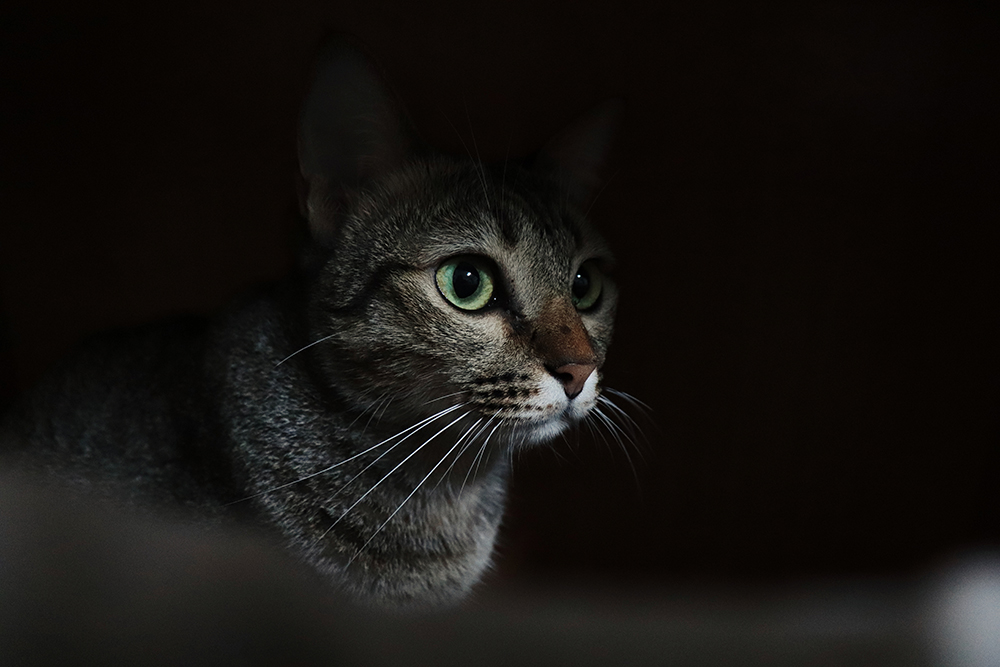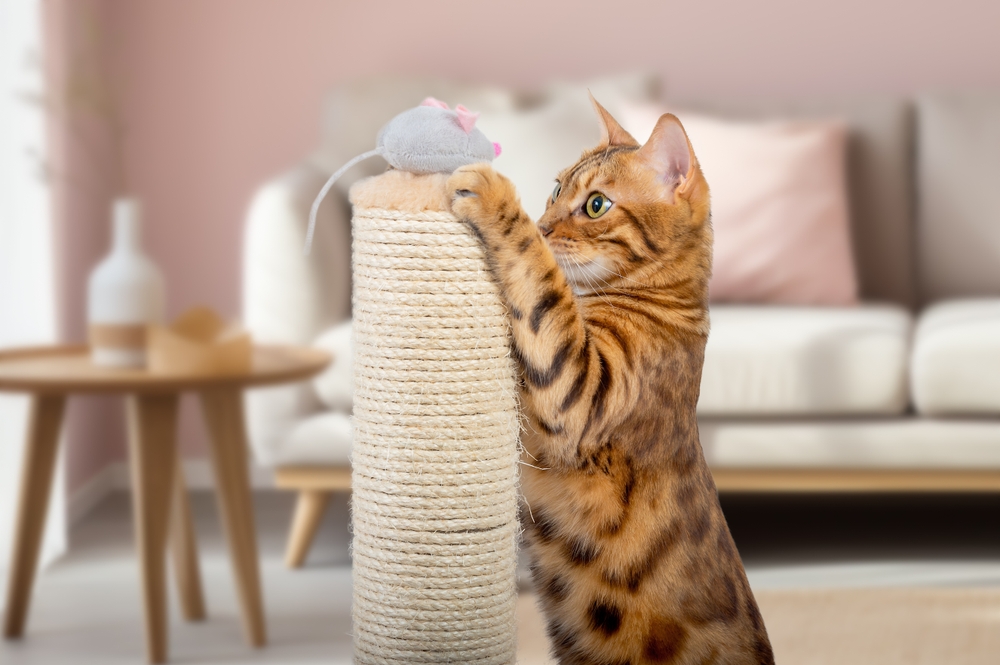Click to Skip Ahead
Adopting a rescue cat is one of the best feelings in the world. You get to give a cuddly feline a good home and all the love, food, play, and nap time that they want.
There is always going to be a bit of a mystery around a rescue animal than if you adopt a kitten from a breeder. You don’t know what they have previously experienced, like if they have been abused or had a previous home at all. Nor can you know their exact age.
So, how can you determine the age of a cat? Thankfully, there are several ways to do so. An examination from a veterinarian is an excellent way to determine their approximate age. You can also try to do this at home. A few essential body parts and behaviors can help give away a cat’s age within a few years.
How Old Is My Kitten?
Kittens’ age-determining methods are slightly different than their adult counterparts. A breeder should always know how old their kittens are, but what if you find kittens separated from their mother?
- 1 day: Kittens have folded ears and closed eyes. They cannot stand on their own.
- 3 days: Their ears begin to unfold, but they are still unable to stand.
- 6 days: Kittens’ eyes slowly begin to open. The ears should be open at this point, but they are still unable to hear anything. After a week, they start to crawl slowly.
- 10 to 15 days: Their eyes should be open.
- 2 weeks: Kittens begin walking unsteadily.
- 3 weeks: The ear canals begin opening so the kittens can start responding to sound. They have practiced walking and are better at it. Their baby teeth start to emerge. They can also begin to train using the litter box at this age.
- 4 to 5 weeks: Kittens start to play with each other and self-groom. They start to use their sight to find their mother and begin to eat solid food.
- 6 weeks: When kittens are born, their eyes are generally blue. At this age, they will change from blue to their permanent color.
- 8 weeks: Kittens will look like mini versions of cats, weighing about 2 pounds. They will be fully weaned and be able to regulate their temperature as if they were adults.

How Old Is My Cat? 6 Ways to Determine Your Adult Cat’s Age
Once a kitten hits 8 weeks or 2 months old, it becomes more challenging to determine their age down to the day or week. However, there are still ways that you or your vet can determine your cat’s age.
1. Cat Teeth
One of the best ways to determine your cat’s age is by checking their teeth. Their baby teeth emerge in 2 to 4 weeks, and their permanent teeth begin to develop above the baby teeth when the cat is between 3 and 4 months old. By 6 months old, they should all be adult teeth, and tooth growth is no longer useful to determine their age.
For older cats, the condition of their teeth is more telling than the growth. The amount of staining or the buildup of tartar can indicate their age. However, dental disease can appear at any age, which will impact the state of your cat’s teeth.

2. Fur
A cat’s coat can be another handy way to determine their age, mainly when drawing the line between a kitten or a mature cat.
The kitten’s fur is fine and soft. As they age, the coat gets thicker and coarser. The markings and coloration also change, developing into what the adult cat will ultimately look like.
If the cat is a senior, look for patches of gray or white. These will start changing as individual hairs, often when the cat is around 10 years old. Some cats do gray earlier, though, just like us humans, so this method isn’t foolproof either.
Grooming behaviors can also be indicative of their age. As a cat grows older, they might grow slack with their grooming. They could gain weight as they age, suffer from dental issues, or have arthritis in essential joints that makes movement painful.
3. Muscle Tone
Check out your cat’s physical build to get a clue about their age. Young cats that have developed beyond 6 months old will have lithe bodies. They are active and will have more muscle tone in their bodies.
Once a cat ages to about 10 years old, they begin to get much slower and less active. They might have saggier skin or be bony on their back end and around their shoulder blades since less muscle offers less padding.
It is also useful to keep in mind that cats that have lived outdoors typically age twice as fast as cats that live inside. The aging rate typically kicks in with full force at about 3 years old.

4. Sexual Maturity
Sexual maturity is one of those signs that can’t be easily confused. Just like signs of puberty tend to happen with greater predictability in humans, cats reach certain stages at certain ages.
Male felines reach their sexual maturity at about 5 months old. These signs include urine spraying and having more visible testicles. This stage is also the time that it is best to get them neutered.
Female cats have their first estrus cycle or heat when they’re around 5 months of age if they have not been spayed. You will know this is happening because they will tell you both vocally and visibly. They can get pregnant at this time.
5. Eyes
A cat’s eyes can be the windows to their age. As a senior, their eyes will begin to get foggy, and they might have problems seeing. As they get past 10 years old, you might start to see discharge or tearing around their eyes that you need to clear away.
A kitten’s eyes indicate their age too, changing from blue to their permanent color at around 7 weeks of age. Another interesting way to guess your cat’s age is by observing the menace response. This appears in cats older than 12 weeks and involves making a gentle, slow hand movement toward your cat’s eyes to see if they immediately close their eyes. Since it is a learned response and not a reflex, it is not present at birth but develops as they mature.

6. Energy Levels
Another way to guess your cat’s age is by their energy levels. Generally speaking, younger cats tend to be much more playful and lively. These characteristics might start to change between the ages of 2 and 3 years old, but some cats never slow down!
As your cat moves into their senior years, typically around 10 or older, they will start to sleep for longer periods. They tend to be much less playful, and their movements may seem a bit slower.
Health conditions can deeply impact your cat’s energy and mood, so it’s important not to ignore this and seek professional advice if your cat seems lethargic and listless. These could be telltale signs of illness, so consider taking them to the vet if the change happens suddenly.
If you want a more accurate estimation of your cat’s age, take them to the veterinarian. Doctors who commonly work with felines will be able to tell roughly how old a cat is by giving them a physical examination.
Final Thoughts
Knowing your cat’s age can help you take better care of them. We are confident that, with the tips provided, you will be able to estimate your new feline friend’s age, knowing that you can always count on your veterinarian for a professional opinion. Cats are adorable at any age, and knowing their life stage only deepens our bond with them, helping us provide them with the love and care they deserve.
Featured image credit: Witsawat.s, Shutterstock













